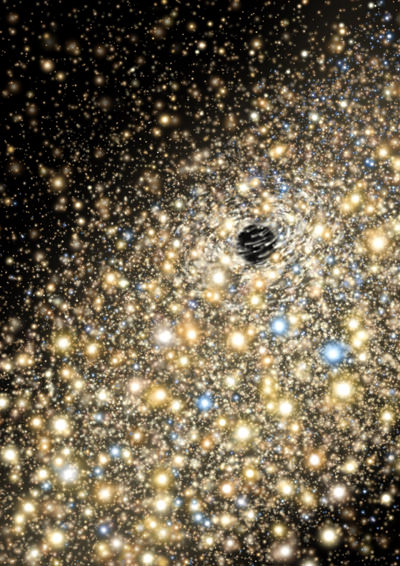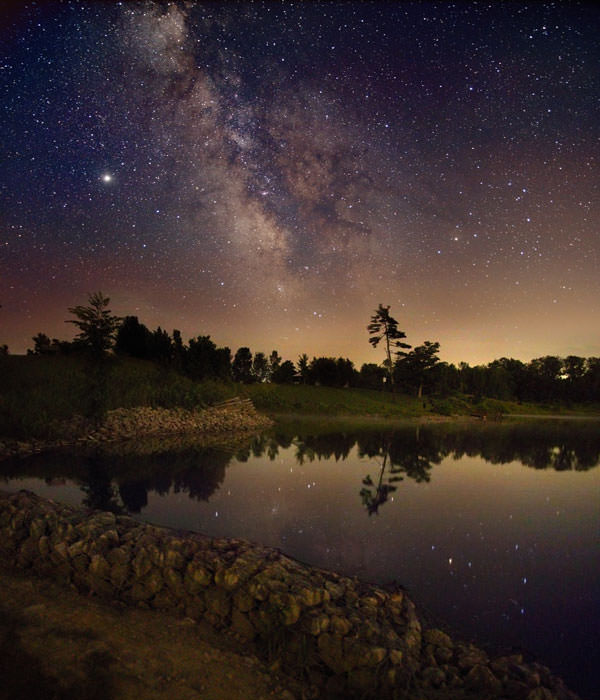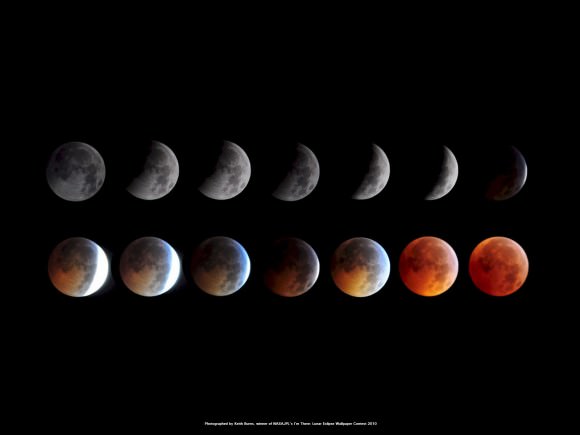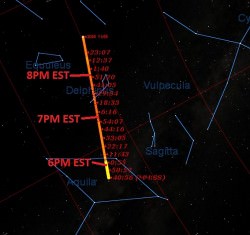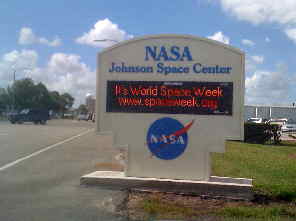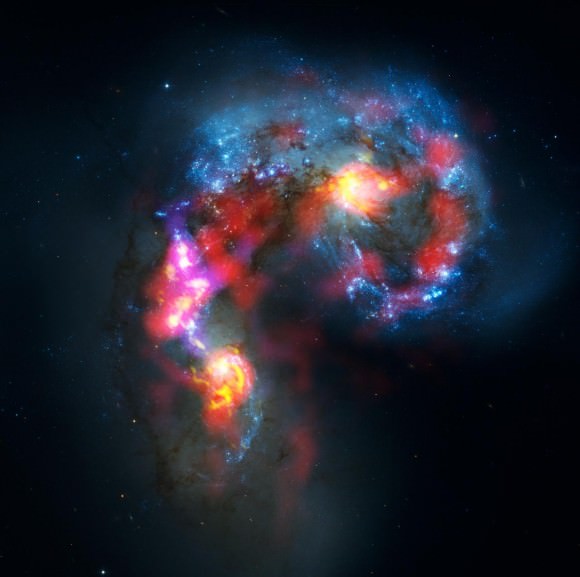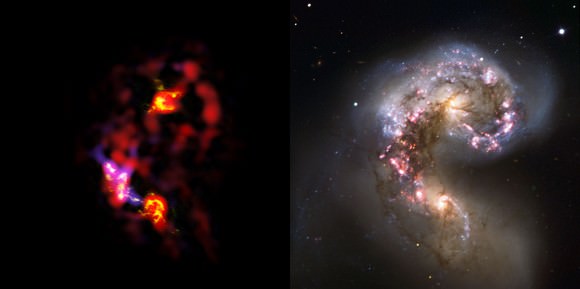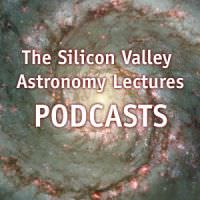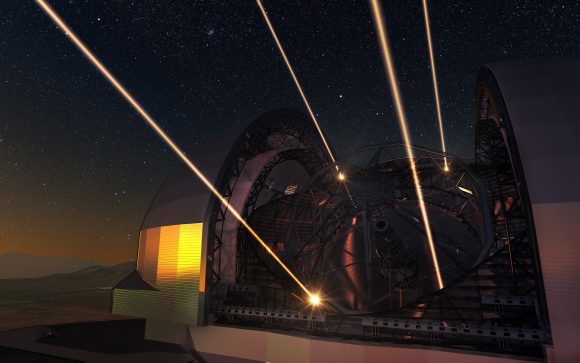[/caption]
For years, astronomer Karl Gebhardt and graduate student Jeremy Murphy at The University of Texas at Austin have been hunting for black holes — the dense concentration of matter at the centre of galaxies. Earlier this year, they made a record-breaking discovery. They found a black hole weighing 6.7 billion times the mass of our Sun in the centre of the galaxy M87.
But now they shattered their own record. Combining new data from multiple observations, they’ve found not one but two supermassive black holes that each weigh as much as 10 billion Suns.
“They just keep getting bigger,” Gebhardt said.

Black holes are made of extremely densely packed matter. They produce such a strong gravitational field that even light cannot escape. Because they can’t be seen directly, astronomers find black holes by plotting the orbits of stars around these giant invisible masses. The shape and size of these stars’ orbits can determine the mass of the black hole.
Exploding stars called supernovae often leave behind black holes, but these only weigh as much as the single star. Black holes billions of times the mass of our Sun have grown to be so big. Most likely, an ordinary black hole consumed another, captured huge numbers of stars and the massive amount of gas that they contain, or be the result of two galaxies colliding. The larger the collision, the more massive the black hole.
The supermassive black holes Gebhardt and Murphy have found are at the centres of two galaxies more than 300 million light years from Earth. One weighing 9.7 billion solar masses is located in the elliptical galaxy NGC 3842, the brightest galaxy in the Leo cluster of galaxies 320 million light years away in the direction of the constellation Leo. The other is as large or larger and sits in the elliptical galaxy NGC 4889, the brightest galaxy in the Coma cluster about 336 million light years from Earth in the direction of the constellation Coma Berenices.
Each of these black holes has an event horizon — the point of no return where nothing, not even light can escape their gravity — 200 times larger than the orbit of Earth (or five times the orbit of Pluto). That’s a mind-boggling 29,929,600,000 kilometres or 18,597,391,235 miles. Beyond the event horizon, each has a gravitational influence that extends over 4,000 light years in every direction.

For comparison, the black hole at the centre of our Milky Way Galaxy has an event horizon only one-fifth the orbit of Mercury — about 11,600,000 kilometres or 7,207,905 miles. These supermassive black holes are 2,500 times more massive than our own.
Gebhardt and Murphy found the supermassive black holes by combining data from multiple sources. Observations from the Gemini and Keck telescopes revealed the smallest, innermost parts of these galaxies while data from the George and Cynthia Mitchell Spectrograph on the 2.7-meter Harlan J. Smith Telescope revealed their largest, outmost regions.
Putting everything together to deduce the black holes’ mass was a challenge. “We needed computer simulations that can accommodate such huge changes in scale,” Gebhardt said. “This can only be done on a supercomputer.”
But the payoff doesn’t end with finding these massive galactic centre. The discovery has much more important implications. It “tells us something fundamental about how galaxies form” Gebhardt said.
These black holes could be the dark remnants of previously bright galaxies called quasars. The early universe was full of quasars, some thought to have been powered by black holes 10 billion Solar masses or more. Astronomers have been wondering where these supermassive galactic centres have since disappeared to.
Gebhardt and Murphy might have found a key piece in solving the mystery. Their two supermassive black holes might shed light on how black holes and their galaxies have interacted since the early universe. They may be a missing link between ancient quasars and modern supermassive black holes.
Source: McDonald Observatory Press Release.

